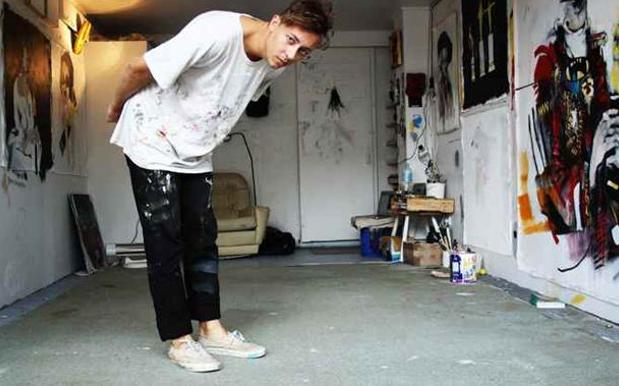
Through movies and literature the Starving Artist has become a romanticised character that we love the idea of: an ink-stained/paint-splattered ‘eccentric’ creative genius working away in some high-ceiling inner city loft, living on a diet of toast and vodka. In reality, on $35,000 per year you’d be lucky to be splitting rent five ways in a shit hole drinking goon, unless you have a pimping trust fund or Miss Havisham is bankrolling your pursuits.
The Australia Council for the Arts recently released a series of statistics in a study entitled ‘Health check for careers of Australian artists’ that paints a discouraging picture of the working lives of artists in Australia. According to their findings (based on data gathered from 44,000 respondents) Australian artists continue to struggle financially, earning a median income of just $35,900 a year – which includes arts and non arts related income.
Other discouraging statistics the study revealed:
– 16% of artists earn less than $10,000
– Only 5% earn more than $100,000.
– Just over half who live with a partner say their spouse’s income is important in supporting their artistic practice.
– While income levels of other professional occupations requiring similar lengths of training and experience have been steadily rising, the ongoing disparity between the incomes of artists and other professionals is becoming more and more pronounced.
Personally, at the best of times I struggle to trace a stick man, but I do love art and have a huge respect for and appreciation of the work artists do and I’m not alone. Long before Michaelangelo was abseiling down the walls of the Sistine Chapel in the early 16th Century, the act of creating beauty for beauty’s sake – making art – is a vocation admired and cultivated within every civilisation and each subculture. Likewise, there’s no lack of love for art in Australia; take for example the sale of Sidney Nolan’s First-class marksman earlier this year. With a $5.4 million purchase price, it is the most expensive Australian artwork ever sold at auction. The Australian Council study similarly found that the contribution of the artistic community to Australian life, when measured in cultural and social terms, is immense.
And yet despite our mad love for art the significant value of this social and cultural contribution is not reflected in artists’ bank accounts. Australia is dealing with a community of bona-fide “starving artists”.
Research papers like ‘Health Check For Careers Of Australian Artists’, a similar report from 2003 ‘Don’t Give Up Your Day Job’ and recent Sydney Morning Herald article ‘Why You’ll Never Make A Living As An Artist’ are based on hard industry facts and make for an educational read, but they also send a pretty fucking miserable message to prospective artists: the chance of success is slight, the future looks grim.
Based on those statistics, Anthony Lister is one of the enigmas of Australian art: a critical and financial success story.
The Brisbane-born artist is barely pushing 30 and has already had solo shows in London, San Francisco, New York and Italy; street art bible ‘Beyond the Street’ just named him as one of the 100 Leading Figures in Urban Art; and he once turned down an offer from Paris Hilton to buy one of his works (which incidentally featured Paris Hilton as the subject) because she wasn’t willing to pay the asking price.
The career of Lister and other Australian artists who’ve successfully turned their art into their livelihood can hopefully give artists hope (amidst the discouraging statistics) that pursuing a career in art doesn’t necessarily have to translate to living in a squat with a homeless dude and a Sharpie. I spoke to three Australian artists who have been financial successful from their careers as artists: photographer Cybele Malinowski, artist Jeremyville and Anthony Lister, who provided some insight into how budding artists can actually make a living in Australia…
A GUIDE: HOW TO MAKE A LIVING AS AN ARTIST
1. SELF PROMOTION
In Rene Ricard’s essay on Jean-Michel Basquiat, ‘The Radiant Child’, he wisely advised: “Overprotection [of your art work] is deadly; the stuff has to get out there to be seen.”
Never before has there been more opportunities for artists to get their work out into the world where thousands – potentially millions – of people can view it, largely thanks to the internet.
ONLINE
There’s an abundance of interactive user-run visual blogs online where members can upload their own work at no cost: FormFiftyFive, Dropular, FFFFOUND! and yay!everyday and, more locally, the Monster Children community – another member-run blog space.
Sydney based photographer Cybele Malinowski has carved out a niche in band photography and live music, and a great example of the proactive Gen-Y approach to self-promotion. Her advice to artists looking to gain exposure is to make the most of every available channel: “Blogging, getting your stuff out there is key,” she said. “If people don’t see your work, it doesn’t exist to them. The digital age has revolutionised photography and the industry as a whole. Blog, tweet, flickr, myspace… Get it out through as many forums as possible.”
Sarah Blasko by Cybele for JMag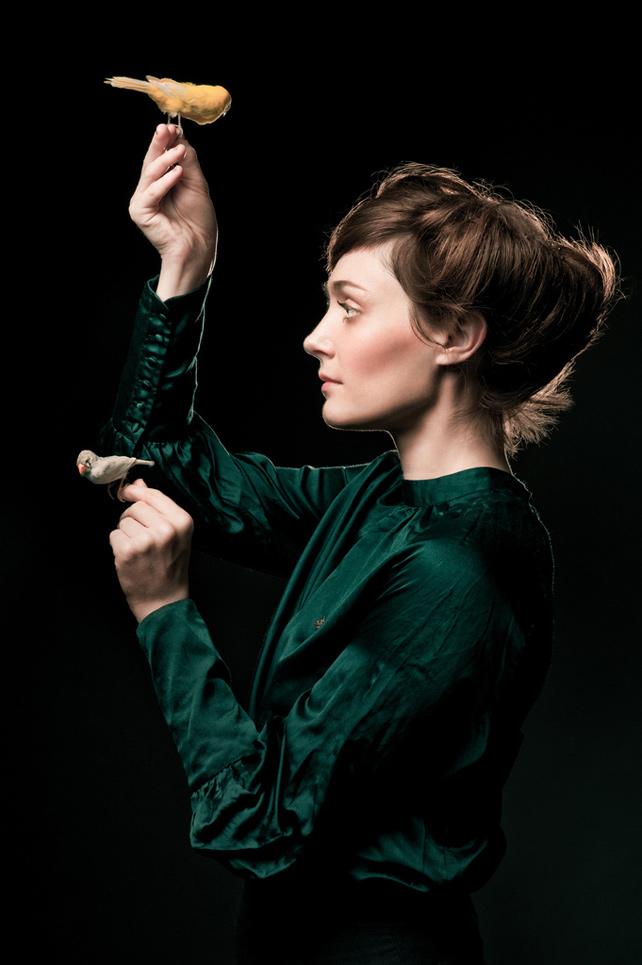
Cybele says creating a base of loyal fans is also key: “You have to keep putting stuff out there on a regular basis, something for your fans to subscribe to and come back to week after week.”
JOIN THE LOCAL INDUSTRY
There’s also a lot to be said for taking an active role in your local industry. Cybele started her career shooting for local street press publisher, Drum Media, which led to her scoring clients like MTV and Vice. Likewise, Anthony Lister wrote for local street publication in Brisbane, Scene Magazine, covering art-related content and interviews – including a fortuitous interview with New Zealand artist Max Gimblett. Their meeting resulted in Gimblett inviting Anthony to New York to do a mentorship and the rest (details notwithstanding) is art history.
2. DIVERSIFY
Diversifying income and output of artwork can increase artists’ exposure and cashflow – which sounds suspiciously like wanky marketing jargon but just bear with me…
While it’s important that artists never undervalue their work, if the only products they’re selling are thousand-dollar paintings immediately the audience is narrowed into people who live within a certain salary bracket. It’s doesn’t take a genius to deduce that tapping-in to a more extended audience = more extensive exposure; Case in point: Lister gained much of the attention that led to his fame for his street art which, suffice to say, he was never remunerated for.
Lister freebie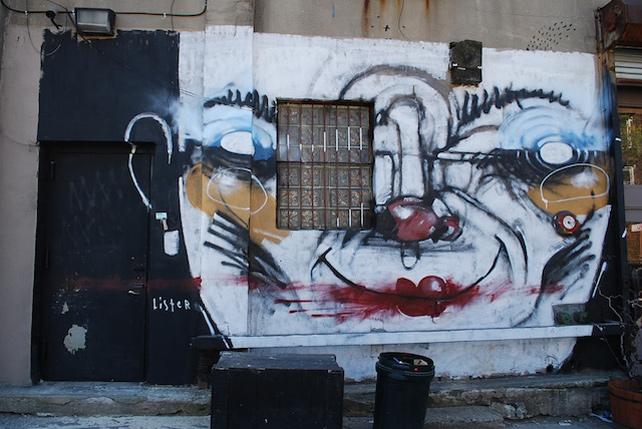
MIX UP PRICE POINTS
Look at the online art store Stupid Krap for example. Stupid Krap sells artworks and products by a stable of Australian artists and covers work in both high and low pricepoints, ranging from $40 hardcover books to limited edition prints to original artworks upward of $800. Let’s face it, a lot of people can’t afford the original artwork but having the book on their coffee table for visitors to browse is an equally effective way for artists to indirectly build their audience.
CROSS-MEDIUM WORK
Being precious about their particular medium is a great way for artists to be that person living in a squat with a homeless dude and a Sharpie. Looking beyond the ‘canvas’ (or whatever) to other mediums is an increasing trend of artists who, to paraphrase Master P’s “I’m Going Big Time”, gots to get paid.
Brisbane artist Mel Baxter makes part of her living designing sleeve art and posters for local bands, just as Sydney duo Katherine Brickman and Kate Mitchell known collectively as Greedy Hen have expanded their “products” from original artworks to album covers, posters, music video clips and are in the process of developing their own fashion label.
Cloud Control cover art by Greedy Hen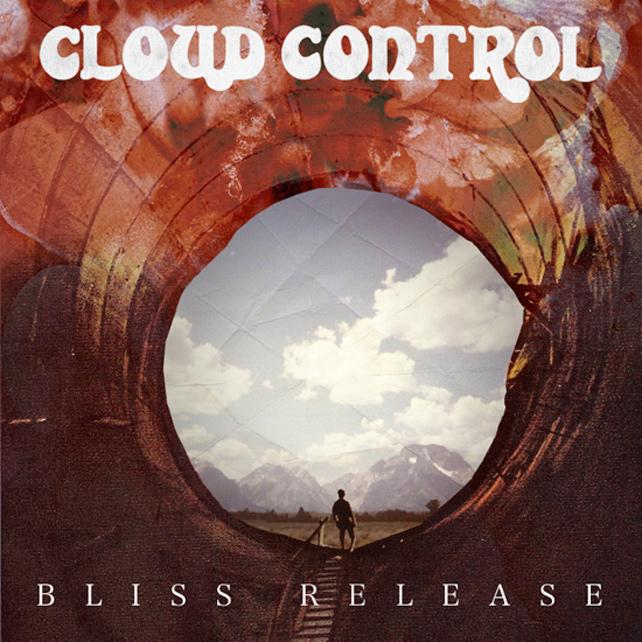
There’s a heap of clothing brands like Insight and RVCA who employ teams of artists to make the imagery, designs, prints, photographs, etc you see on the t-shirts. Renowned street artist Barry McGee and painter Jo Jackson both work as contributing artists for RVCA, and Archibald prize winner Del Kathryn Barton collaborated with Romance Was Born on one of their earlier collections.
Sydney born artist Jeremyville has an unmistakable aesthetic in his work and the reason it has become instantly recognisable is his near-unparalleled ability to diversify. There are few artists out there – in Australia or the rest of the world – who’ve accomplished his phenomenal coverage across so many mediums.
Jeremy gave an insight into the phenomenon that he’s central to. He explained, “I see Jeremyville as more of a concept, a series of ongoing projects, rather than a traditional brand. So I work in book publishing, art shows, animation, sneaker designs for Converse, designer toys for Kidrobot… I was in a group show at the Warhol Museum in Pittsburg. A Norwegian denim label just released a Jeremyville pair of jeans. The French Energy Ministry just ran a series of ads on French TV that we animated.
“I just finished a commission for Asics Tokyo to design the graphics and ads for the 2010 Tokyo Marathon. I’m hosting a series of salon evenings for my artist friends and art collectors at my new SoHo loft in New York.
“So how those all come together, I have no idea. They just do, it’s just all Jeremyville.”
Illustrator-designer Rilla Alexander of collective Rinzen is another master of diversification: Her creations have appeared on credit cards for the Swiss Cornér Bank and ceramics for German porcelain maker Rosenthal. She’s worked with brands including Mambo and Puma, and is illustrating a collection of Grimm Brother’s Fairytales for German publishers.
Diversifying Jeremyville-style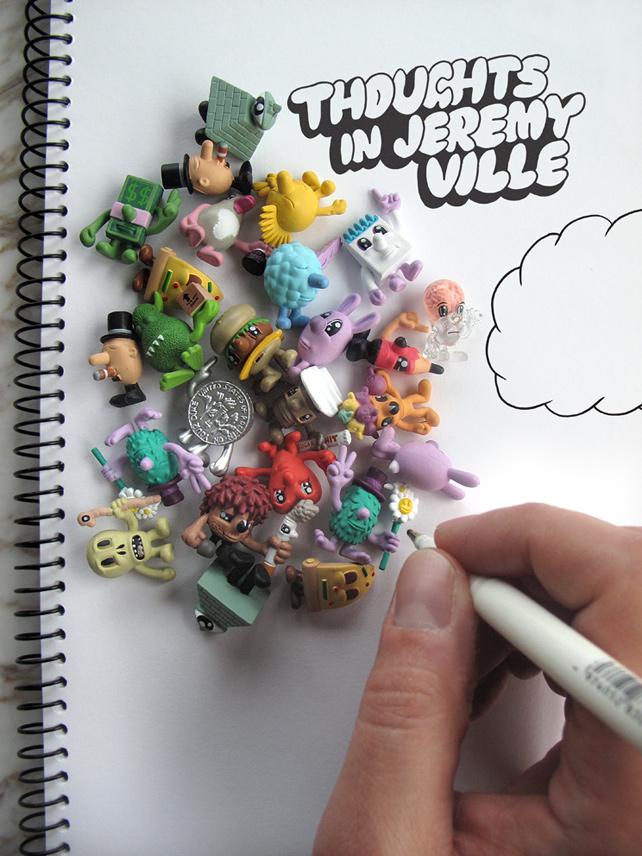
MEDIA
With this I refer to Media: the means of communication with widespread distribution. A few examples: The illustrations of Brisbane’s Megan Hess were used for the covers of Candace ‘Sex And The City’ Bushnell’s novels; Multi-talented, multimedia artist Clemens Habicht created artwork for Meredith Music Festival marketing material; Melbourne’s illustration-meets-watercolour artist Kat Macleod provided the imagery for fashion/weather website Michi Girl and has also illustrated layouts in Frankie Magazine; Chris Searl is the in-house photographer for Monster Children magazine.
Think onine publications, magazines, novels, newspapers, phone books, zines, graphic novels, street directories, your cousin’s wedding invites… etc, etc…
3. WORKING WITH BRANDS & GOING CORPORATE
Don’t be afraid of “selling out” or working for the man. The belief that working with a commercial brand or organisation will compromise your artistic integrity is fine but these days we’ve become so accustomed to the idea of art and commerce coexisting harmoniously that no one even says ‘sell out’ anymore. Instead they say, “hey there, can I take a ride in your luxury sedan?”
Ken Done who was an innovator of art as a brand once said, “Art shouldn’t be something that you go quietly into an art gallery and dip your forelock and say ‘I have to be very quiet, I’m in here amongst the art.’ It’s here, art’s everywhere. It’s how you use your eyes. It’s about the enjoyment of visual things. And it’s certainly not for any one group of people.”
It’s a great statement.
Ken Done’s artwork is obviously not for everyone but he was a true visionary in the democratisation of the art world. Art appreciation has long deviated from its rep as an activity strictly reserved for culture snobs in the highbrow, and so it makes sense for artists to adopt the same attitude – and not at the expense of their work either.
Jeremyville is a prolific collaborator and his take on this concept of ‘selling out’ is simple: “If ‘selling out’ means doing something that pays well but you’re not proud of the work, and you feel bad about putting your name to it, then definitely don’t do that. No human being should do that, especially not an artist! If you are proud of the collaboration, proud of the work you have done and you did it to the best of your ability, and a client pays you well for your work, then that’s great. No dramas. To me it’s as simple as that.”
He says, “Earning good money for your good art does not mean it’s bad art. Making bad art for lots of money means it’s bad art. There is a big difference.
“I get offers all the time to work on projects with companies, I only choose the ones that fit the Jeremyville aesthetic, and turn down those that don’t really add anything new to what we are about. it’s a very quick decision, I don’t really deliberate over it, and how much money it’s worth doesn’t even factor in to it. An artist’s instinct and intuition is everything. Choices are everything. Being able to say no to a project (however lucrative) is a very powerful tool in building a long career. If you do it well, soon the right companies and the right projects will start to come to you, and you won’t need to seek them out. It will all just flow the way you want it to.”
4. CREATE A NICHE
Are there any truly original ideas left? It’s a question we all ponder from time to time; – I once thought I’d invented a never-before-used euphemism for wanking (“throwing dice”) but moments later I was foiled by urbandictionary.com as a stale-minded nobody. Anthony Lister – who is possibly the Confucius of contemporary art, provided me with a beautiful analogy of where the world has arrived with regards to creative thought: “The first Elvis impersonator was original.”
True innovation in art – as in other domains in life – is probably one of the most difficult ambitions an artist can strive for but if achieved there will be no shortage of people wanting to be the impersonator to your Elvis. Like artist Andy Uprock who is largely credited as the originator of graffiti revolution ‘cuprocking’ (involving fences, cups and paint) which landed him a campaign for Mooks and a world tour.
5. TALENT + CHARACTER
The artists referenced in this article did not only find success because they’ve followed any one of the suggestions above – a person with my artistic aptitude could follow them all to the letter and it wouldn’t change the fact that they’re a inproficient hack. Talent is the most important attribute for any artist aiming for success; but that talent needs to be paired with character.
I asked Cybele, Jeremy and Anthony what they think the most important attributes an artist needs in order to succeed…
LISTER
“I would say stubbornness. The ability to learn and adapt to a situation and a stubbornness. And having the guts to make decisions or take a big leap… When the opportunity comes up you need the guts to be aware of it and to follow it.”
“Spinning Tricks”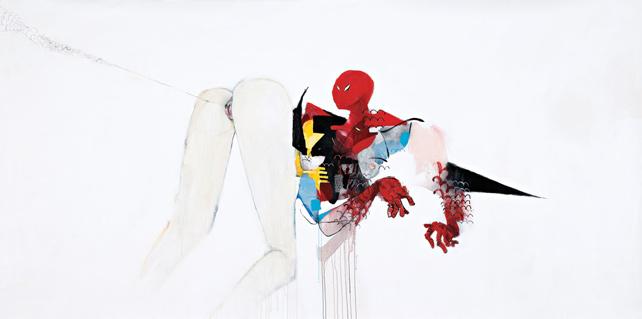
JEREMYVILLE
“Firstly it’s about having a unique voice and an aesthetic that is truly you. You can’t look at trends and try to fit in to that, you have to be yourself, and then be single minded and go out and find your market. Aussie artists have a really fresh vision, in my opinion, it’s very true to the essence of what good art should be. i.e. self expression, instinct, truth over pretense, raw, but with a refinement. Sophisticated but without being mannered. It’s hard to sum up Australian art, but to me these qualities ring true in the better Aussie artists out there. Aussies have a great bullshit detector, and it comes across in the art produced I think. Just look at the amazing street art coming out of Melbourne laneways, and Sydney wall murals right now. Fantastic.
“In terms of traits for success, to me any successful artist is generally very focused and self absorbed in their vision of what they want to become. Last night I saw the documentary Basquiat, at Film Forum in Spring Street New York. It had a great interview with Jean-Michel, and most of his friends interviewed said that he always did exactly what he wanted, and had a very healthy ego that wanted fame, success and recognition in the art world, but he did it with irony, humour and intelligence. There’s nothing wrong with being like this. Being humble and self deprecating is not that great a trait to have if you want to succeed in a career as ephemeral as an artist.
“Having an innate business sense, and knowing how to play the game so that it does not play you, is also crucial, in my opinion. I see so many companies and business individuals trying to exploit artists, trying to take advantage of them financially. Artists need to know their rights and stick up for their worth, set higher benchmarks, not work for peanuts, and place more value on their work. It’s no use brushing that side of the business off to agents, a business partner or a gallerist, artists need to educate themselves more about their rights and the way the market and their industry works, and to control their own destiny. The world has changed.”
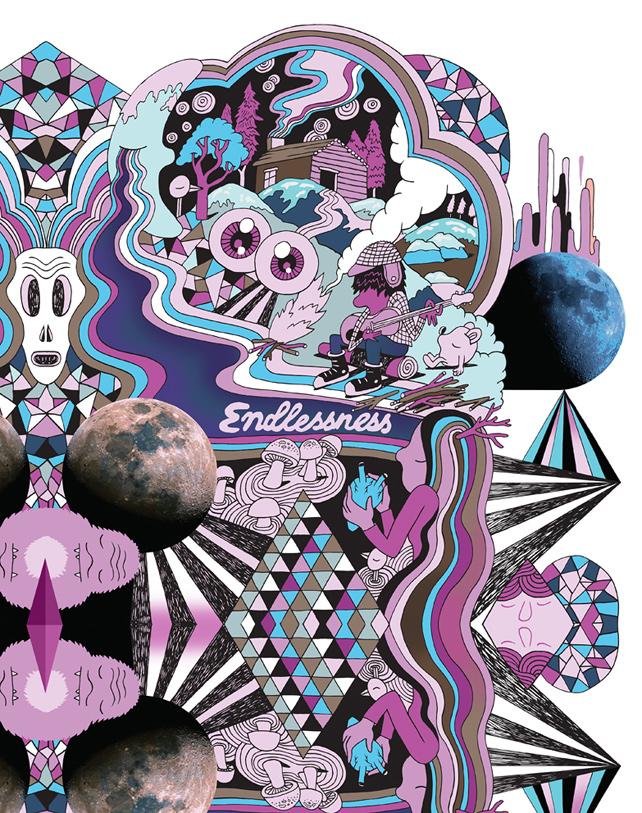
CYBELE
“You have to put in the hard yards. Like Rachel Hunter once said, it might not happen over night, but it will happen. You’ve gotta do the shitty jobs, assist, learn and grow. I am still learning now, and constantly reassessing my work, I still have so much to learn. It is important to keep it real. Confident but humble. It is only through experience, and time that you can become truly confident in your field.
“Everyone’s a photographer. Don’t let that get you down. It’s a visual world we live in, photography is a part of everyone’s life. We’ve all got an iphone. Some kids have better cameras than me! But that’s all the more reason to push you further, try harder, prove yourself.
“It takes a while for the money to start rolling in. Unless your a little rich kid who has parents willing to invest in your creative yearnings, you are going to have to go get another job, and juggle between the two for a while. The trick is, to know when to take the plunge, quit the other job and just have faith in earning from your art. It’s fucking scary!
“Being a photographer isn’t just about taking pretty pictures. It’s a business. You have to do the accounts, clean the studio, keep your clients happy, and still take hot shots. I am actually thinking of doing a business course next year, as I still see myself as a photographer first, business owner second. This is dangerous. I look around at some of the older gen photographers, and it’s the ones who know how to really work the business side of things that have had the longevity in their career.”
Lily Allen by Cybele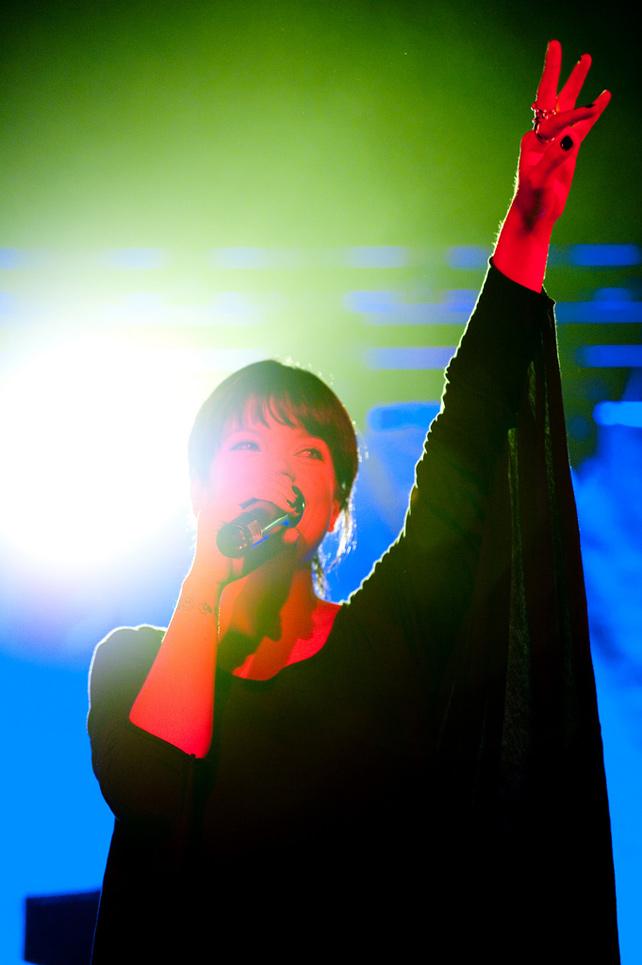
Let’s face it: I could sponge great advice out of professional artists and spout entrepreneurial and promotional ideas all day long, the truth is the trick to making an income as an artist really is one of the great mysteries of the universe with no absolute solution. Taking initiative with an original concept, proactively building an extensive audience, taking advantage of all opportunities, collaborating with brands. – The road map for Australian artists may be a little rough but there are working examples of paths to follow that might make the road a little smoother.
The country is in the midst of a cultural revolution. Between 2001 and 2007, the number of Australian adults working in visual arts activities nearly tripled from 0.5 million to over 1.4 million people – a remarkable trend. The responsibility for the rest of us is to increase participation accordingly: buy an art book, buy a painting, go to the independent galleries in your neighbourhood, forward your favourite artist’s work to friends, ask the illustrator next door to design your next album cover, hook up a local painter to do a family portrait, invest in some beautiful photography, support funding for the Australia Council of the Arts. Part of overcoming the current statistics is becoming a more supportive audience as well.
And to any struggling or unemployed artists out there, if we ever meet up I hope you’ll let me buy you a drink because I so admire the work that you do (and because all my favourite starving artist characters were boozers after all).
Thank you to the artists who generously contributed:
Anthony Lister
Jeremyville
Cybele Malinowski



